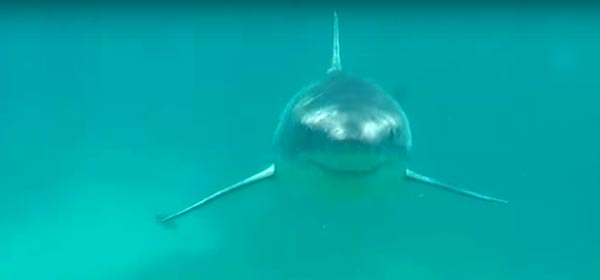The Australian coastline is renowned for its beauty, attracting beachgoers from around the world. However, recent findings have sparked a wave of concern for both the safety of swimmers and the well-being of marine life. Images obtained under freedom of information reveal a gruesome sight: sharks, including a juvenile great white and a decapitated hammerhead, found bitten in half near popular NSW beaches. These macabre discoveries are not isolated incidents but rather a recurring consequence of the NSW government’s shark net program, which has been criticised significantly.
The shark net program, which has been in place since 1937, was designed to protect swimmers by reducing the presence of potentially dangerous sharks near beaches. However, the program’s effectiveness and impact on marine ecosystems have been hotly debated. Conservationist Andre Borell, from the Envoy Foundation, and campaigners from Action for Dolphins have raised alarms about the unintended consequences of the nets. They argue that the entangled and subsequently deceased marine animals serve as an attractant to larger predators, potentially increasing the risk to swimmers rather than mitigating it.
You May Like
‘Dangerous consequences’ is not an overstatement when considering the evidence presented by Borell and his colleagues. The images of large bite marks on the ensnared sharks suggest that after becoming trapped, these creatures are vulnerable to attacks by even bigger predators. This scenario paints a grim picture: the very measures intended to safeguard human life may inadvertently be ringing the dinner bell for larger sharks, drawing them closer to shore.
The NSW Department of Primary Industries, which oversees the state’s shark control measures, has countered these claims by citing overseas studies that suggest shark mitigation gear does not attract sharks closer to shore. They maintain that the nets and SMART drumlines are strategically placed to intercept target sharks, thereby reducing the likelihood of interactions with beachgoers. However, the data tells a different story. Despite a reported increase in the number of animals released alive from the nets, the majority still do not survive the encounter.
The department has taken steps to address the concerns about the program’s impact on marine life. These include using drone surveillance to inspect the nets, increasing the frequency of net inspections, and trialling the use of lights on nets to deter turtles and prevent entanglement. These measures represent the most significant changes to the shark meshing program in nearly four decades, a response to the growing outcry over the collateral damage to Australia’s diverse marine species.
Yet, the question remains: are these measures enough? Critics, including organisations like Humane World for Animals, the Australian Marine Conservation Society, and Sea Shepherd, argue that the technology used in the shark net program is outdated and that there are more effective and less harmful alternatives available. They point to advancements such as drone surveillance, which can provide real-time monitoring of shark activity and alert swimmers without endangering marine life.
The debate over the shark net program has reached a critical juncture. With councils across the greater Sydney region voting to have nets removed from their beaches, and the NSW Government engaging in consultations about the use of shark mitigation devices, it’s clear that public sentiment is shifting. The challenge now is to balance the safety of beachgoers with the preservation of marine ecosystems.
What are your thoughts on this issue? Do you feel safer swimming in areas with shark nets, or do you believe there are better solutions? Have you noticed any changes in marine life or beach safety in your area? Share your insights and experiences in the comments below.
Also read: How to protect yourself from ‘avoidable’ shark attacks at WA beaches

